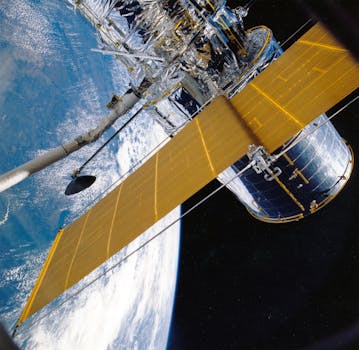Navigating the Skies: Insights into Recent Satellite Telecommunications Innovations

Navigating the Skies: Insights into Recent Satellite Telecommunications Innovations
Navigating the Skies: Insights into Recent Satellite Telecommunications Innovations have transformed the telecommunications landscape, enabling faster, more reliable, and more widespread connectivity. The recent advancements in satellite telecommunications have far-reaching implications for global communication, commerce, and innovation. In this article, we will delve into the latest developments in satellite telecommunications, exploring their potential to shape the future of telecommunications and beyond.
The advent of satellite telecommunications has bridged the connectivity gap, providing access to remote and underserved communities worldwide. The latest innovations in satellite technology have led to the development of high-throughput satellites, which offer increased bandwidth and faster data transfer rates. This has enabled the widespread adoption of satellite-based services, including broadband internet, mobile connectivity, and IoT applications.
Advances in Satellite Technology
Recent advances in satellite technology have focused on improving the efficiency, capacity, and flexibility of satellite systems. One of the key innovations is the development of phased array antennas, which enable satellites to dynamically adjust their beam patterns and prioritize traffic. This allows for more efficient use of bandwidth and improved signal quality. Additionally, the introduction of advanced propulsion systems has increased the maneuverability and lifespan of satellites, reducing the need for replacement and increasing the overall efficiency of satellite constellations.
Another significant development is the emergence of satellite constellations, which involve the deployment of multiple satellites in low Earth orbit (LEO) to provide global coverage. These constellations offer several advantages, including increased capacity, improved latency, and enhanced resilience. Companies such as SpaceX, OneWeb, and Amazon’s Kuiper Systems are leading the charge in developing these constellations, which are expected to play a crucial role in shaping the future of satellite telecommunications.
Impact on Global Connectivity
The impact of recent satellite telecommunications innovations on global connectivity cannot be overstated. The increased availability of satellite-based services has bridged the digital divide, providing access to information, education, and economic opportunities for millions of people worldwide. Satellite telecommunications have also enabled the development of new applications and services, such as precision agriculture, smart cities, and emergency response systems.
The growth of satellite telecommunications has also driven innovation in related fields, such as antenna design, signal processing, and cybersecurity. As the demand for satellite-based services continues to grow, we can expect to see further advancements in these areas, leading to even more efficient, secure, and reliable satellite systems.
Future of Satellite Telecommunications
As we look to the future of satellite telecommunications, it is clear that the industry will continue to evolve and innovate. The development of new technologies, such as quantum communications and artificial intelligence, will play a crucial role in shaping the future of satellite telecommunications. Additionally, the growing demand for satellite-based services will drive the development of new business models, such as satellite-as-a-service and managed satellite services.
The future of satellite telecommunications also holds significant promise for addressing some of the world’s most pressing challenges, such as climate change, sustainable development, and global health. Satellite-based systems can provide critical infrastructure for monitoring and responding to natural disasters, tracking climate patterns, and delivering healthcare services to remote communities.

